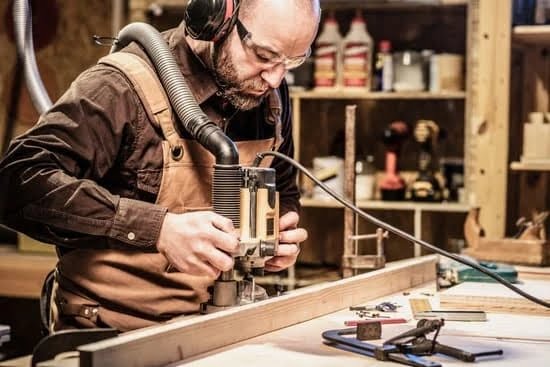A woodworking workbench is an essential tool for any woodworker, providing a sturdy and stable surface for various projects. In this article, we will explore how to use a woodworking workbench effectively to enhance your woodworking skills and projects. From choosing the right workbench to mastering basic techniques and troubleshooting common issues, we will cover everything you need to know to make the most out of this versatile tool.
A woodworking workbench serves as the foundation for all your woodworking endeavors, allowing you to securely hold pieces in place while using various tools. Whether you are a beginner looking to start your first project or an experienced woodworker seeking to refine your skills, understanding the importance of a woodworking workbench is crucial. By utilizing this tool correctly, you can improve the quality and precision of your creations while ensuring safety in your workspace.
Throughout this article, we will discuss key aspects such as selecting the right woodworking workbench based on your needs, setting it up properly in your workspace, and stocking it with essential tools and accessories. Additionally, we will delve into basic woodworking techniques that you can master on your workbench, along with safety tips and best practices to keep in mind.
By following these guidelines and recommendations, you can maximize the utility of your woodworking workbench and elevate your craft to new heights.
Choosing the Right Woodworking Workbench for Your Needs
When it comes to woodworking, having the right workbench is essential for a successful and efficient project. Choosing the right woodworking workbench for your needs can make a significant difference in the quality of your work and overall experience. There are various factors to consider when selecting a workbench, such as size, material, features, and budget.
First and foremost, you need to determine the size of the workbench that will best suit your projects and workspace. A larger workbench provides more surface area for projects but may take up more space. Consider the dimensions of your workshop and the types of projects you typically work on to find an appropriate size. Additionally, decide if you need additional features such as storage drawers, tool racks, or adjustable height options based on your specific requirements.
Material is another crucial factor to consider when choosing a woodworking workbench. Common materials include solid wood, laminated particle board, steel, or a combination of materials. Solid wood workbenches are sturdy and durable but may be more expensive, while laminated particle board benches offer affordability with decent durability.
Steel benches are incredibly strong but may lack some traditional features found in wooden benches. Evaluate the type of projects you will be working on and your budget to determine which material will best suit your needs. Remember to also consider how easy it is how to use a woodworking workbench made from different materials before making a final decision.
Setting Up Your Woodworking Workbench in Your Workspace
- Choose the right location: Select a well-lit area in your workspace that provides enough space for you to move around comfortably. Make sure the flooring is stable and level to ensure the stability of your workbench during use.
- Leveling your workbench: Use a level to ensure that your workbench is even on all sides. Adjust the feet or shims underneath the legs if necessary to achieve a stable and level working surface.
- Organize your tools: Set up tool holders, pegboards, or shelves near your workbench to keep essential tools within easy reach. Consider installing a vise or clamps to secure your workpieces while working on them.
Now that you have set up your woodworking workbench properly, it’s time to learn how to use it effectively. Here are some basic steps on how to use a woodworking workbench:
- Secure your workpiece using clamps or a vise.
- Position yourself in front of the workbench with proper posture and alignment.
- Use appropriate hand tools such as chisels, saws, hammers, and screwdrivers for various woodworking tasks.
- Practice basic woodworking techniques such as measuring, cutting, drilling, sanding, and finishing under the guidance of experienced woodworkers or through instructional videos and resources.
By following these steps and continuously practicing on your woodworking workbench, you will gradually improve your skills and confidence in handling various woodworking projects efficiently and safely.
Essential Tools and Accessories to Have on Your Woodworking Workbench
Woodworking requires the use of various tools and accessories to create beautifully crafted pieces. When setting up your woodworking workbench, it is essential to have the right tools at hand to make your projects run smoothly. Here are some essential tools and accessories to have on your woodworking workbench:
1. Clamps: Clamps are crucial for securing wood while working on it. They come in various sizes and types, such as bar clamps, spring clamps, and C-clamps. Having a selection of clamps will help you hold your workpieces securely in place as you saw, drill, or sand.
2. Measuring Tools: Accurate measurements are key in woodworking projects. Ensure you have measuring tools like a tape measure, combination square, and a marking gauge on your workbench. These tools will help you mark dimensions accurately before making cuts.
3. Hand Planes: Hand planes are essential for smoothing out rough surfaces, shaping edges, and flattening wooden boards. Having a few hand planes of different sizes will allow you to achieve the desired finish for your woodworking projects.
| Essential Tools | Accessories |
|---|---|
| Clamps | Dust masks |
| Measuring Tools | Safety goggles |
| Hand Planes | Hearing protection |
Having these essential tools and accessories on your woodworking workbench will not only make your projects more manageable but also safer to execute. Remember always to wear the necessary safety gear when using these tools to protect yourself from any potential hazards bound to occur during woodworking tasks.
Basic Woodworking Techniques to Master on Your Workbench
Woodworking is a craft that requires skill, precision, and practice. Whether you are a beginner or an experienced woodworker, mastering basic woodworking techniques on your workbench is essential for creating quality projects. Here are some fundamental woodworking techniques to help you get started:
- Measuring and Marking: Accurate measurements are crucial in woodworking. Use a reliable tape measure and marking tools such as a pencil or marking knife to mark your cutting lines before making any cuts.
- Cutting: A sharp handsaw or power saw is essential for cutting wood accurately. Take your time and follow your marked lines closely to ensure clean and precise cuts.
- Joinery: Joinery techniques like butt joints, dado joints, and mortise and tenon joints are commonly used in woodworking projects. Practice making these joints on scrap pieces of wood to improve your skills before tackling larger projects.
Once you feel comfortable with these basic techniques, you can move on to more advanced woodworking skills.
- Sanding: Sanding is an important step in finishing any woodworking project. Use varying grits of sandpaper to smooth out rough edges and surfaces, starting with coarse sandpaper and gradually moving to finer grits for a polished finish.
- Assembly: Assemble your project pieces carefully using clamps or vises on your workbench to hold them securely in place. Make sure all joints fit snugly together before securing them with glue, screws, or dowels.
- Finishing: Applying a finish such as stain, paint, or varnish can enhance the appearance of your woodworking project while also protecting it from wear and tear. Follow the manufacturer’s instructions for applying the finish evenly and allow ample drying time between coats.
Mastering these basic woodworking techniques on your workbench will not only improve the quality of your projects but also increase your confidence as a woodworker. Remember to practice regularly and have patience as you hone your skills in this timeless craft.
Safety Tips and Best Practices for Using a Woodworking Workbench
Woodworking can be a rewarding and fulfilling hobby, but it also comes with risks if proper safety precautions are not taken. When using a woodworking workbench, it is essential to prioritize safety to prevent accidents and injuries. Here are some important safety tips and best practices to keep in mind when working at your woodworking workbench.
Wear Personal Protective Equipment (PPE)
One of the most important aspects of staying safe while using a woodworking workbench is wearing the appropriate personal protective equipment (PPE). This includes safety glasses or goggles to protect your eyes from flying wood chips or debris, ear protection to safeguard against loud noise from power tools, and a dust mask to prevent inhalation of harmful wood dust particles.
Keep Your Workspace Clean and Organized
A cluttered and messy workspace can increase the risk of accidents while working at a woodworking workbench. Make sure to keep your work area clean, organized, and free of obstructions. This includes removing scraps of wood, tools, and other items that could potentially cause tripping hazards or interfere with your work.
Use Tools and Equipment Properly
It’s crucial to use all tools and equipment on your woodworking workbench according to their intended purposes. Make sure you are familiar with how each tool works before using it, always follow manufacturer instructions, never force a tool beyond its capabilities, and be mindful of proper hand placement while operating power tools. By using tools correctly, you can avoid accidents and ensure efficient workflow on your woodworking projects.
By following these safety tips and best practices when using a woodworking workbench, you can create a safe working environment for yourself and enjoy your woodworking projects with peace of mind. Remember that prioritizing safety is key to preventing accidents and injuries in the workshop.
Troubleshooting Common Issues When Using a Woodworking Workbench
Workbench Stability
One common issue faced when using a woodworking workbench is stability. To ensure your workbench stays steady during use, make sure it is properly assembled and all components are securely tightened. If the workbench wobbles or shakes, try adjusting the leveling feet or adding shims under the legs to stabilize it. Additionally, consider adding weight to the base of the workbench or anchoring it to the floor for extra stability.
Tool Organization
Another issue that can arise when using a woodworking workbench is clutter and disorganization. To keep your workspace tidy and efficient, invest in tool organizers, pegboards, or shelves to store your tools and accessories within easy reach. Utilize drawer inserts or dividers to separate small items like nails, screws, and drill bits. Keeping your work area organized not only saves time but also prevents accidents caused by misplaced tools.
Workpiece Slipping
When working on a project on your woodworking workbench, you may encounter issues with your workpiece slipping or moving out of place. To prevent this problem, consider using non-slip mats or pads on the surface of your workbench. Alternatively, clamp down your workpiece securely using quick-grip clamps or bench dogs to hold it in place while you work. Always pay attention to how you position your piece on the bench to minimize movement while cutting, drilling, or sanding.
By addressing these common issues when using a woodworking workbench efficiently and effectively while enhancing your overall woodworking experience.
Maintenance and Care Tips for Keeping Your Woodworking Workbench in Top Shape
Woodworking workbenches are essential tools for any woodworker, providing a sturdy and reliable surface for various projects. To ensure that your woodworking workbench remains in top shape and continues to support your crafting endeavors effectively, regular maintenance and care are key. Here are some useful tips to help you maintain your woodworking workbench:
1. Clean Regularly: It is important to keep your woodworking workbench clean to prevent the buildup of dust, debris, or any other materials that can potentially damage the surface or affect your woodworking projects. You can simply use a brush or a vacuum cleaner to remove any accumulated dirt.
2. Protect the Surface: To maintain the quality of your woodworking workbench’s surface, consider applying a coat of protective finish such as varnish or wax. This not only enhances the appearance of the workbench but also creates a protective barrier against scratches and moisture.
3. Check for Damage: Regularly inspect your woodworking workbench for any signs of damage such as cracks, dents, or loose components. Addressing these issues promptly can prevent further damage and ensure that your workbench continues to provide a stable and safe working environment.
By following these maintenance and care tips, you can extend the lifespan of your woodworking workbench and enjoy its benefits for years to come.
| Maintenance Tip | Description |
|---|---|
| Clean Regularly | Use a brush or vacuum cleaner to remove dirt and debris |
| Protect the Surface | Apply a protective finish like varnish or wax to prevent scratches |
| Check for Damage | Regular inspections can help address potential issues early on |
Advanced Techniques and Projects to Tackle on Your Woodworking Workbench
In conclusion, a woodworking workbench is an essential tool for any woodworker, whether you are a beginner or a seasoned craftsman. The right workbench can make all the difference in the quality and efficiency of your projects. By choosing the appropriate workbench for your needs, setting it up correctly in your workspace, and equipping it with the necessary tools and accessories, you are setting yourself up for success.
Once you have mastered the basic woodworking techniques on your workbench, you can move on to more advanced projects. From intricate joinery to complex furniture pieces, your workbench provides a sturdy and reliable surface for tackling these challenging endeavors. With practice and dedication, you can expand your skills and take on new woodworking challenges with confidence.
Remember to always prioritize safety when using a woodworking workbench. Follow best practices, wear appropriate safety gear, and be mindful of potential hazards in order to prevent accidents or injuries. Regular maintenance and care will also ensure that your workbench remains in top shape for years to come. By following these guidelines and continually honing your skills, you can unlock the full potential of your woodworking workbench and elevate your craft to new heights.
Frequently Asked Questions
Is It Cheaper to Build a Workbench or Buy One?
Building a workbench can be cheaper than buying one, especially if you have access to affordable materials and tools. DIY workbenches allow for customization based on your needs, potentially saving costs compared to purchasing a pre-made one.
What Can You Use a Workbench For?
A workbench is a versatile piece of furniture that can be used for various tasks. It provides a sturdy surface for woodworking, crafting, repairing items, assembling projects, and even serving as a makeshift table or storage space. Its functionality is only limited by your creativity and requirements.
What Are the Pegs on a Workbench For?
The pegs on a workbench serve as handy tools for holding items securely in place while you work on them. They are often used with bench dogs or holdfasts to prevent objects from moving around during tasks like sanding, sawing, planing, or chiseling. This feature enhances stability and productivity when using the workbench for different activities.

Hi everyone! I’m a woodworker and blogger, and this is my woodworking blog. In my blog, I share tips and tricks for woodworkers of all skill levels, as well as project ideas that you can try yourself.





